Summary Overview
High Fructose Corn Syrup Market Overview
The global high fructose corn syrup (HFCS) market is growing steadily, driven by rising demand in industries such as food and beverage, medicines, and cosmetics. This market offers a wide range of HFCS products, including HFCS-42, HFCS-55, and others. Our paper analyses procurement trends in depth, with an emphasis on cost management methods and the growing use of digital tools to optimize sourcing and operational workflows.
Key difficulties for the HFCS industry in the coming years include controlling raw material costs, guaranteeing supply chain reliability, resolving regulatory compliance, and limiting potential health risks associated with HFCS intake. The use of digital procurement technologies and effective sourcing methods is critical for streamlining procurement procedures, lowering costs, and maintaining market competitiveness.
Market Size: The global High Fructose Corn Syrup market is projected to reach USD 6.5 billion by 2035, growing at a CAGR of approximately 2.32% from 2025 to 2035.
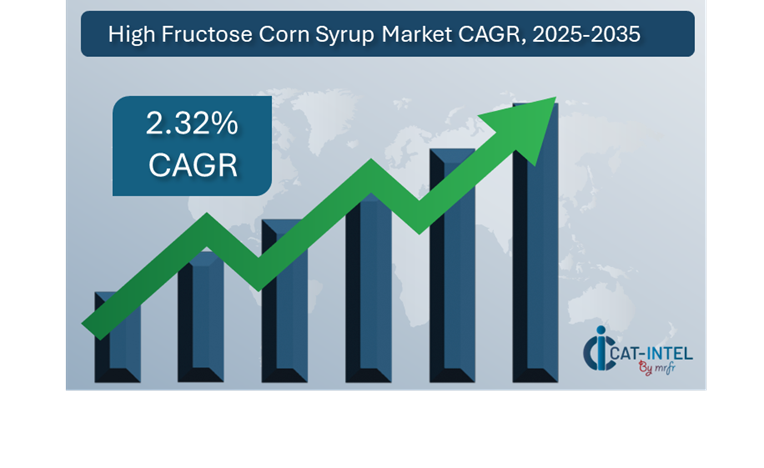
-
Sector Contributions: Growth in the market is driven by: -
Manufacturing and Supply Chain Optimization: Increasing demand for HFCS necessitates real-time data and streamlined supply chain operations for efficient manufacturing and delivery.
-
Retail and E-Commerce Growth: The food and beverage sector need good inventory management and demand forecasting due to e-commerce and retail expansion. HFCS plays a vital part in this process.
-
Technological Transformation: AI and machine learning are improving the HFCS production process through predictive analytics, automation, and quality control.
-
Innovations: Modular solutions in HFCS production enable firms to choose the most appropriate technology and processes, lowering complexity and expense.
-
Investment Initiatives: The HFCS market is moving towards modern production infrastructure, with companies investing in cloud-based solutions to optimize operations and save costs.
-
Regional Insights: North America and Asia Pacific dominate the HFCS market due to advanced digital infrastructure and significant adoption of cloud-based technologies.
Key Trends and Sustainability Outlook:
-
Cloud Integration:HFCS industry helps organizations scale operations, decrease infrastructure costs, and access real-time data.
-
Advanced Features: Integrating AI, IoT, and blockchain into HFCS production processes improves efficiency, transparency, and decision-making.
-
Customization Trends: The food and beverage industry is increasingly seeking personalized solutions to match their individual manufacturing requirements.
-
Data Driven Insights: Advanced analytics and data-driven insights help organizations estimate demand, optimize inventory, and increase production efficiency.
Growth Drivers:
-
Digital Transformation: The improving productivity and operational effectiveness in the food and beverage sector, including HFCS production.
-
Demand for Process Automation: As the HFCS market expands, producers are utilizing automation to streamline production, cut labour costs, and avoid operational bottlenecks.
-
Scalability Needs: HFCS manufacturers seek scalable manufacturing solutions that prioritize quality and efficiency.
-
Regulatory Compliance: Companies are using complex software solutions to verify compliance with health regulations and industry standards, particularly with components like HFCS that are under investigation.
-
Globalization: Global demand for HFCS has led manufacturers to seek solutions that enable international operations, such as multi-currency and multi-language capabilities, as well as compliance with various regulations.
Overview of Market Intelligence Services for the High Fructose Corn Syrup Market:Recent investigations have found major issues in the high fructose corn syrup (HFCS) sector, including increased production costs and the need for effective supply chain management. Market intelligence studies provide useful data that can help businesses uncover cost-cutting opportunities, optimize supplier relationships, and improve overall production efficiency. These insights also help to maintain compliance with industry standards and consistent product quality, all while successfully managing operating costs.
Procurement Intelligence for High Fructose Corn Syrup: Category Management and Strategic Sourcing
To remain competitive in the HFCS market, businesses are optimizing procurement procedures through detailed spend monitoring and supplier performance monitoring. Effective category administration and strategic sourcing are critical for lowering procurement costs while maintaining a consistent supply of excellent raw materials and additives. Businesses can use actionable market intelligence to enhance their procurement strategy, negotiate better terms with suppliers, and assure the consistent availability of HFCS at affordable prices.
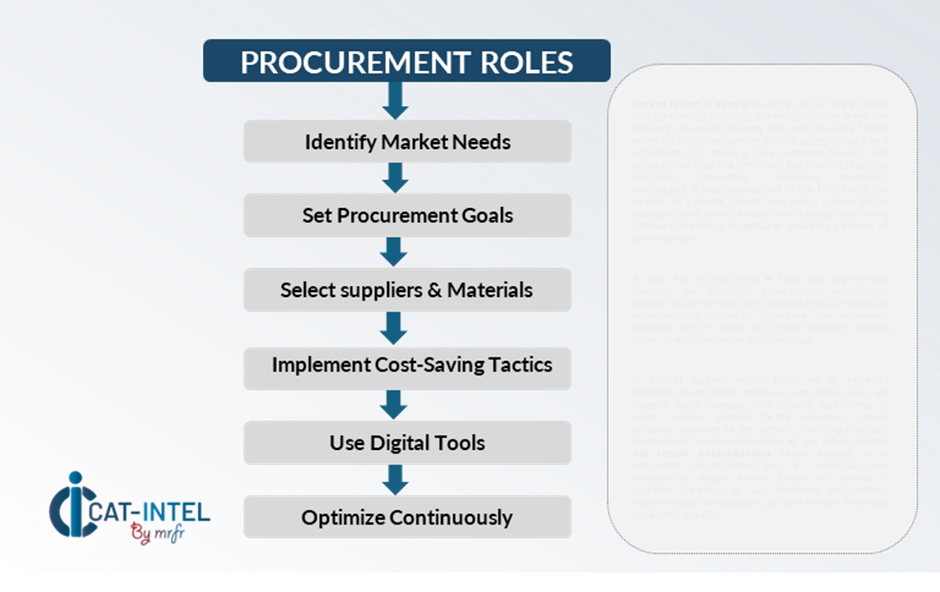
Pricing Outlook for High Fructose Corn Syrup: Spend Analysis
The price prognosis for high fructose corn syrup (HFCS) is projected to be moderately volatile, driven by several factors. Price fluctuations are primarily driven by changes in raw material costs, supply chain problems, global demand swings, and regional pricing differences. Furthermore, the expanding focus on methods of sustainability, together with increasing regulatory requirements and health concerns, is contributing to upward price trends in the HFCS market.
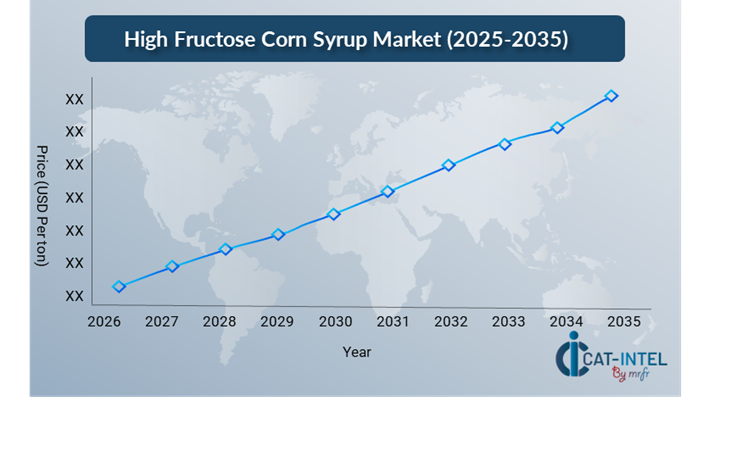
Graph shows general upward trend pricing for High Fructose Corn Syrup and growing demand. However, there may be fluctuations influenced by economic conditions, technological advancements, and competitive dynamic.
Efforts to optimize procurement processes, strengthen supplier relationships, and use strategic sourcing are critical for cost reduction. Digital solutions for market intelligence, advanced analytics-based pricing predictions, and efficient supplier contract management can all help to reduce costs dramatically.
Long-term partnerships with dependable suppliers, negotiating multi-year agreements, and investigating bulk buying or subscription-based models are all viable approaches to manage HFCS cost. Despite these obstacles, focusing on supply chain resilience, assuring product quality, and implementing flexible production systems will be critical to sustaining cost-effectiveness and operational excellence in the HFCS industry.
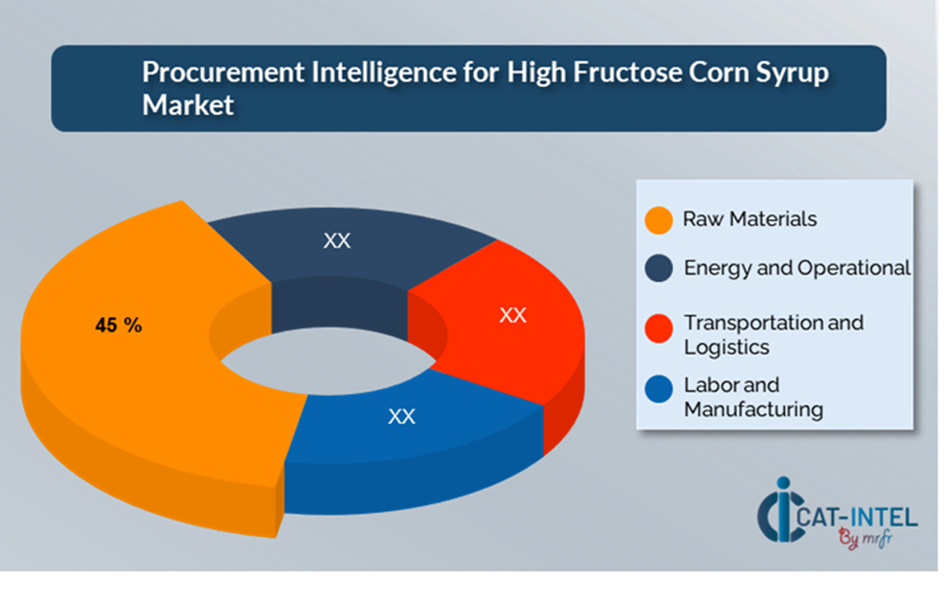
Cost Breakdown for High Fructose Corn Syrup: Total Cost of Ownership (TCO) and Cost-Saving Opportunities
- Raw Material: (45%)
-
Description: Corn prices fluctuate due to weather, worldwide demand, and agricultural subsidies, making it the principal input material for HFCS production.
-
Trends: There is a growing emphasis on sustainable agricultural practices to secure the long-term availability of raw materials, with some producers investigating the use of genetically modified (GM) maize to increase yields.
- Energy and Operational: (XX%)
- Transportation and Logistics: (XX%)
- Labor and Manufacturing: (XX%)
Cost-Saving Opportunities: Negotiation Levers and Purchasing Negotiation Strategies
In the high fructose corn syrup (HFCS) business, streamlining procurement processes and implementing strategic bargaining strategies can result in significant cost savings and increased operational efficiency. Creating long-term contracts with dependable HFCS suppliers can result in better price structures and beneficial terms such as bulk purchase discounts and bundled delivery arrangements. Businesses can secure competitive pricing and reduce the possibility of price increases over time by entering into multi-year contracts and negotiating long-term supplier agreements.
Collaborating with suppliers who prioritize innovation and scalability provides additional benefits, such as access to more efficient manufacturing methods, advanced supply chain management systems, and sustainable sourcing practices, all of which help decrease long-term operational costs. Implementing digital procurement solutions, such as supplier relationship management systems and demand forecasting analytics, improves transparency, reduces supply chain interruptions, and optimizes purchasing decisions.
Supply and Demand Overview for High Fructose Corn Syrup: Demand-Supply Dynamics and Buyer Intelligence for Effective Supplier Relationship Management (SRM)
The high fructose corn syrup (HFCS) industry is steadily expanding, propelled by altering consumer preferences, increased demand in the food and beverage industries, and the need for more efficient manufacturing and supply chain operations, technological improvements, industry specific needs, and overall global economic conditions all have an impact on supply and demand dynamics.
Demand Factors:
-
Increasing Consumer Demand: Because of its low cost and adaptability in sweetening and preservation, HFCS is becoming increasingly popular in food and beverage goods.
-
Sustainability and Health Trends: Consumer demand for healthier options, combined with regulatory pressures on sugar content, is altering the market.
-
Supply Chain and manufacturing Efficiency: As food and beverage firms increase operations, there is an increasing demand for HFCS suppliers who can offer flexible, scalable manufacturing capabilities and maintain consistency.
-
Integration Capabilities: The demand for HFCS manufacturers to integrate with advanced supply chain management systems, production monitoring software, and digital tools is increasing.
Supply Factors:
-
Technological Advancements: Innovations in production technologies, including as automated manufacturing, data analytics, and increased quality control methods, are helping HFCS producers become more efficient and competitive.
-
Vendor Ecosystem: The number of HFCS providers is growing, with both large-scale producers and smaller, specialized businesses offering a variety of alternatives.
-
Global Economic Factors: Exchange rates, labour prices, and regional economic situations all have an impact on the pricing and availability of raw materials used in HFCS production.
-
Scalability and Flexibility: As worldwide demand for HFCS rises, providers are providing more scalable and flexible manufacturing systems to accommodate organizations of all sizes and complexities.
Regional Demand-Supply Outlook: High Fructose Corn Syrup
The Image shows growing demand for High Fructose Corn Syrup in both North America and Asia Pacific, with potential price increases and increased Competition.
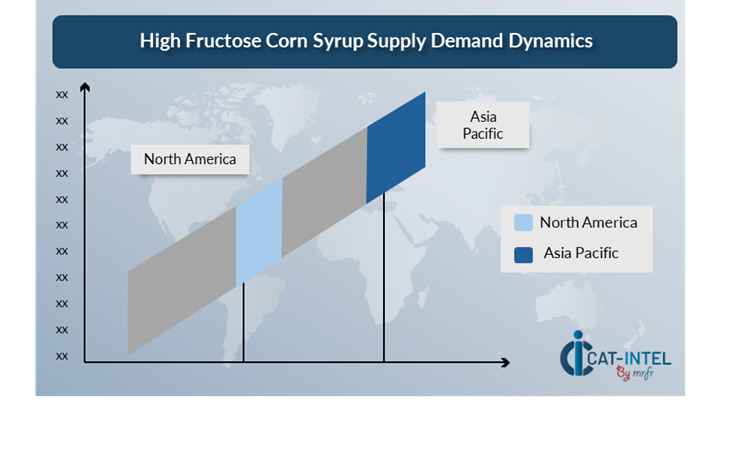
North America: Dominance in the High Fructose Corn Syrup Market
North America, particularly the United States, is a dominant force in the global High Fructose Corn Syrup market due to several key factors:
-
High Demand from the Food and Beverage Industry: The country has one of the most extensive and varied food and beverage sectors, and high fructose corn syrup (HFCS) is widely used as a low-cost sweetener in processed goods.
-
Established Supply Chain Infrastructure: With improved logistics and production capabilities, HFCS producers can satisfy the expanding demands of food and beverage firms.
-
Large-Scale Production Capacity: The United States is a world leader in maize production, which is used as a key raw material for HFCS, making it a dominating supplier in the global market.
-
Cost Efficiency and Accessibility: HFCS is a less expensive alternative to other sweeteners such as cane sugar, making it especially appealing in North America, where price sensitivity and cost reduction are top goals for producers.
-
Innovation and Regulatory Environment: North America is the industry leader in sweetener research and development, driving innovation in HFCS processing and applications.
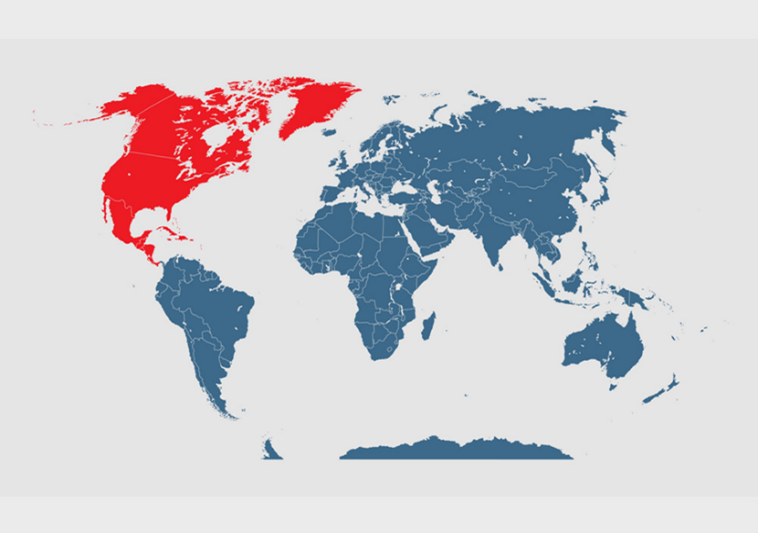
North America Remains a key hub High Fructose Corn Syrup Price Drivers Innovation and Growth.
Supplier Landscape: Supplier Negotiations and Strategies
The supplier landscape in the high fructose corn syrup (HFCS) market is similarly diversified and competitive, with a mix of large-scale global suppliers and smaller, regional competitors influencing industry dynamics. These suppliers have a significant impact on the raw material pricing, production quality, sustainability practices, along with supply chain efficiency. The industry is dominated by widely recognized HFCS producers with significant production capacities, while smaller, specialist providers focus on niche uses such as organic or non-GMO HFCS or provide distinctive features such as customized delivery or manufacturing procedures.
The HFCS supplier ecosystem extends across important worldwide manufacturing regions, with significant international corporations and innovative local businesses catering to specific industry requirements. As food and beverage firms continue to prioritize cost effectiveness, sustainability, and quality, HFCS suppliers are moving forward, production capabilities, adopting more sustainable practices and implementing new technologies into their processes in order to fulfil changing client demands. Many suppliers are also providing flexible pricing structures, such as bulk purchase choices and long-term contracts, to meet the changing demands of organizations in various sectors. This dynamic supplier landscape encourages product innovation, increases competitiveness, and provides food producers with a variety of options for getting high-quality HFCS while minimizing operational costs and achieving sustainability goals.
Key Suppliers in the High Fructose Corn Syrup Market Include:
- Archer Daniels Midland Company
- Cargill, Inc.
- Tate & Lyle PLC
- Ingredion Incorporated
- Global Sweeteners Holdings Limited
- Fuji Oil Company, Ltd.
- COFCO Corporation
- Südzucker AG
- Domino Specialty Ingredients
- Zhucheng Dongxiao Biotechnology Co., Ltd.

Key Developments Procurement Category Significant Development:
Significant Development |
Description |
Market Growth |
Rising demand for affordable sweeteners, combined with increased consumption of processed foods and beverages, is driving producers to increase production and streamline supply networks for improved efficiency. |
Cloud Adoption |
There is an increasing shift toward digital solutions in the HFCS sector, particularly with cloud-based platforms. HFCS manufacturers can monitor production processes, manage inventories, and streamline supply chains from anywhere. |
Product Innovation |
HFCS suppliers are expanding their products through technologies like as advanced data analysis, real-time manufacturing monitoring, and sustainable manufacturing processes. and provide specific items. |
Technological Advancements |
Machine learning, Internet of Things (IoT) integration, and automation are accelerating progress in the HFCS market. Routine procedures are also being automated, which will assist suppliers in lowering costs, improving quality, and remaining competitive. |
Global Trade Dynamics |
Changes in worldwide trade rules, compliance standards, and economic policies are influencing the HFCS market dynamics. Multinational corporations that operate internationally must navigate intricate supply chains, tariffs, and local legislation. |
Customization Trends |
The need for specialist HFCS products is increasing, especially in regions where specific dietary preferences, regulatory norms, or local market requirements must be addressed. HFCS providers are reacting by providing more tailored solutions, such as bulk purchase choices and long-term contracts, to meet the changing needs of organizations across industries. |
|
High Fructose Corn Syrup Attribute/Metric |
Details |
Market Sizing |
The global High Fructose Corn Syrup market is projected to reach USD 6.5 billion by 2035, growing at a CAGR of approximately 2.32% from 2025 to 2035. |
High Fructose Corn Syrup Technology Adoption Rate |
Around 60% of HFCS manufacturers globally use modern production technology like automation, data analytics, and real-time monitoring systems. |
Top High Fructose Corn Syrup Industry Strategies for 2025 |
HFCS producers should integrate sustainable practices, focus on supply chain optimization, use advanced analytics for demand forecasting, and improve production flexibility using modular systems. |
High Fructose Corn Syrup Process Automation |
Approximately half of HFCS producers have used process automation in areas such as quality control, inventory management, and production scheduling automating these procedures increases productivity, lowers costs, and maintains constant product quality. |
High Fructose Corn Syrup Process Challenges |
Major obstacles in the HFCS industry include fluctuating raw material prices, regulatory demands related to health concerns, supply chain interruptions, and the requirement to maintain high product quality while fulfilling cost efficiency targets. |
Key Suppliers |
Leading producers of HFCS are Archer Daniels Midland Company, Cargill, and Tate & Lyle. These suppliers are key players in supplying high-quality HFCS to various industries.
|
Key Regions Covered |
North America, Europe, and Asia-Pacific are major markets for HFCS adoption, with particularly high demand in the food and beverage, pharmaceutical, and cosmetics industries. |
Market Drivers and Trends |
The HFCS market is expanding due to rising demand for low-cost sweeteners in food and beverage items, the requirement for environmentally friendly manufacturing processes, and the use of new technologies such as automation and artificial intelligence. |

